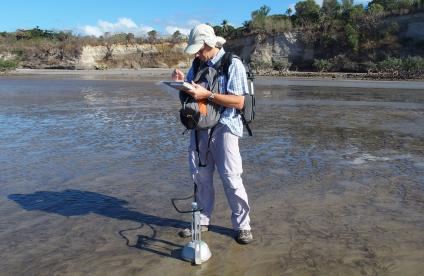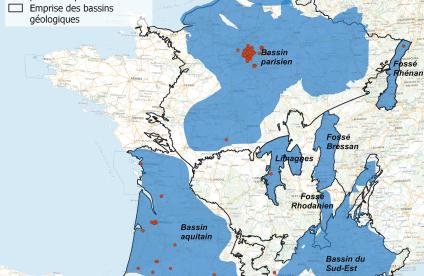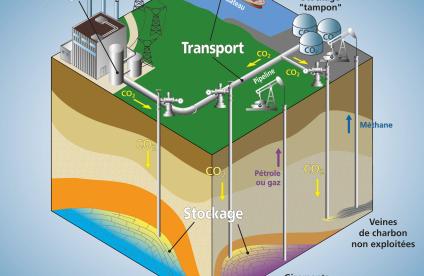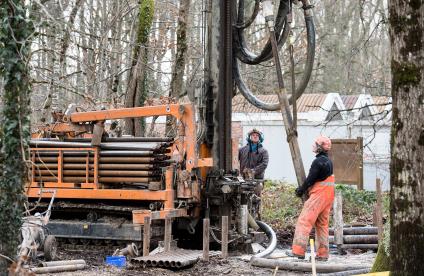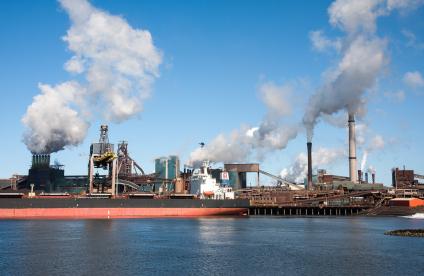Your challenges and needs
Controlling greenhouse gas (GHG) emissions is a major challenge in the fight against global warming. In order to achieve carbon neutrality by 2050, the reduction of CO2 concentration in the atmosphere naturally requires a drastic reduction in GHG emissions, but this will inevitably have an impact on certain unavoidable end uses. This is why the capture of CO2 emitted by industrial installations and its permanent storage in deep underground layers is one of the relevant complementary solutions for reducing ultimate emissions and achieving carbon neutrality.
With a global storage capacity of at least 2,000 Gt, geological formations can trap very large volumes of CO2 for millions of years. Different geological storage techniques can be envisaged, using saline aquifers, former oil or gas wells, deep coal seams, or alkaline and ultra-alkaline rocks.
In order to assess the potential for integration of these systems and to ensure their performance, upstream studies are needed to assess geological formations that are capable of possibly storing CO2 and to determine the technical and economic solutions best suited to the region. From the choice of emission -capture method, through their sequestration mode to their economic exploitation, CCUS technologies can cover a wide range of multiple scenarios, depending on the situation.

CO2 injection and storage: proposed baseline scenarios for future evolution.
© BRGM
Our added value
BRGM has been a key player in research and innovation in the geological storage of CO2, and is an expert on the subject in many scientific and technical networks (chairman of the French CO2 Club and the CO2GeoNet association). Its teams develop tailor-made approaches to assess the potential of a region and the feasibility of integrating CCUS solutions at different stages of a project.
- During the upstream phase:
- Mapping of CO2 emission sources and industrial clusters in the region;
- Involvement of local stakeholders in the development of CCUS scenarios;
- Verification that these scenarios meet the specific needs of the region.
- On the capture of CO2 from industrial or atmospheric sources:
- Trapping CO2 by dissolving it in water;
- Electrochemical reduction trapping from layered double hydroxides (LDHs);
- Atmospheric CO2 capture/storage loop using lagooning (lime milk) and calcination.
- Geological storage of CO2:
- Assessment of geological storage potential and characterisation of associated reservoirs;
- Estimation of 3D dynamic and analytical storage capacities (volumetric approach);
- Definition and optimisation of the injection strategy and technology;
- Simulation of water-fluid-rock interactions at the well or storage system scale;
- Follow-up of sites through appropriate monitoring.
- On the use and exploitation of CO2:
- Identification of the potential for CO2 use and planning of a CO2 network by means of a geographic information system (GIS);
- Mineralisation via processes of mineral carbonation of alkaline waste by passivation of CO2;
- Energy use by in situ conversion to methane with green hydrogen or in synergy with geothermal energy;
- Environmental analysis of the CCUS chain, Life Cycle Assessment of carbon.
Technical and digital facilities
- Laboratories for physico-chemical analysis and mineral characterisation of rock materials
- BioRep platform: study of deep geological environments (high pressure and extreme conditions)
- GÉNIE platform for numerical modelling of geochemistry
- Ter’GEOPHY platform for ground geophysics
Patents
- A process for capturing, separating and purifying gases by means of amorphous mixed oxides (no. FR 09 02940);
- A process for the absorption of atmospheric carbon dioxide - carbonates sector (no. FR 12 61556);
- A process for the absorption of atmospheric carbon dioxide - salt sector (no. FR 12 61557);
- A process for absorbing atmospheric carbon dioxide by treating phosphate ore (no. FR 20 03466).
A few references
- Development of the CCUS sector for strategic plans for the deployment of CCUS technology in Southern and Eastern Europe (STRATEGY CCUS project);
- Geophysical characterisation of storage sites, modelling/simulation of injection, development of monitoring plans and well design (PilotSTRATEGY project);
- Onshore CO2 storage in Europe (ENOS project);
- CO2 injection pilot systems in saline aquifers via geothermal doublets (CO2-DISSOLVED project);
- Exploitation and storage of CO2 from biomass transformation for greenhouse cultivation (CO2SERRE project).
References
Solutions






